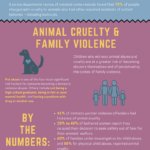The animated film “A Dog’s Tale” crafted a nuanced narrative that intertwines the emotional journey of a dog with a poignant critique of animal cruelty. As the plot unfolds, viewers are confronted not only with the heartwarming and heart-wrenching experiences of the film’s protagonists but also with the larger implications of their suffering. This article delves into the intricacies of animal activism depicted in the movie, examining how characters take a stand against the injustices faced by our furry companions, and what audiences can glean from their actions.
At the heart of “A Dog’s Tale” is the character of the dog, who embodies both vulnerability and resilience. Through the lens of this beloved pet, the film demonstrates the harsh realities faced by animals in a society that often relegates them to mere possessions. The story’s protagonist, although depicted as an innocent creature, serves as a powerful symbol of the need for advocacy against animal cruelty. As the narrative progresses, viewers witness direct emotional responses to various forms of mistreatment, compelling them to consider the moral obligations humans have toward animals.
One of the primary figures opposing animal cruelty within the film is the character of the vigilant animal rights activist. Through her unwavering dedication and passionate protests, she personifies the essence of advocacy. Her role is crucial; not only does she illuminate the plight of animals, but she also serves as a beacon of hope for those who feel powerless. By organizing rallies, engaging the community, and educating the masses, she demonstrates that activism can manifest in myriad forms. These elements remind viewers that individual actions can collectively drive societal change.
Moreover, the film explores various modes of protest that resonate deeply with audiences. One particularly striking scene depicts a protest outside a dog breeding facility. The activists wield signs emblazoned with powerful slogans, conducting a silent vigil to honor the dogs suffering within. This moment serves not only as a focal point for the narrative but also as a clarion call for viewers to reflect on the ethical implications of breeding practices. It challenges societal norms and encourages a dialogue about the moral fabric of pet ownership and the responsibilities that accompany it.
In juxtaposition, the film also features a scene where the activist engages with local lawmakers, passionately advocating for animal welfare legislation. This critical moment highlights the intersection of activism and policy reform, emphasizing that true change often necessitates engagement with the political sphere. It is a testament to the idea that activism transcends mere protest; it encourages the active shaping of laws that govern animal rights and welfare. This dual approach showcases how the film effectively combines emotional storytelling with a powerful social message.
The visual storytelling in “A Dog’s Tale” serves to reinforce the activist’s mission. The use of contrasting imagery—vivid depictions of the warmth of home life against the cold, harsh realities of animal neglect—serves to elicit strong emotional responses. The artistry encapsulates both the joy animals can bring and the pain they often endure, setting the stage for discussions surrounding compassion and empathy. It compels the viewer to recognize animals not merely as companions but as sentient beings deserving of respect and protection.
The character dynamics in the film further amplify its activist message. By placing the activist alongside skeptical characters, the film enriches its discourse on animal rights. These skeptical characters, often seen dismissing the activist’s efforts, embody the pervasive societal apathy toward animal welfare. Their transformation, catalyzed by exposure to the realities faced by animals, underscores the film’s insistence that awareness and education are fundamental aspects of advocacy. This narrative arc speaks volumes about the importance of empathy as a gateway to understanding and change.
For viewers, “A Dog’s Tale” offers a multifaceted exploration of activism. The blend of emotional intensity with critical commentary urges audiences to reflect on their own roles within the larger framework of animal rights. It poses significant questions: How can individuals contribute to the cause? What responsibilities do we bear toward those who cannot voice their suffering? The film serves as both a call to action and a reminder of the collective duty to protect the vulnerable.
The allure of “A Dog’s Tale” lies not only in its compelling narrative but also in its capacity to spark conversations around important social issues. Engaging with its themes, audiences may discover various avenues for activism, from volunteering at local shelters to advocating for ethical treatment practices in their communities. The movie becomes a catalyst for discourse and a source of inspiration for individuals seeking to make a difference.
Ultimately, “A Dog’s Tale” transcends the confines of entertainment. By weaving together themes of despair, hope, and change through the lens of animal activism, it creates a rich tapestry that calls for immediate reflection and action. The film invites viewers to embrace their role as advocates, illustrating that even the smallest acts of kindness can ripple through society, fostering a future where animals are treated with the dignity they rightfully deserve.
As the credits roll, one is left with a palpable sense of urgency and an urge to act. Whether sparked by a newfound passion for advocacy or the stirring emotional journey of its characters, the film leaves a lingering impact—reminding us all that the fight against animal cruelty is one worth joining.






